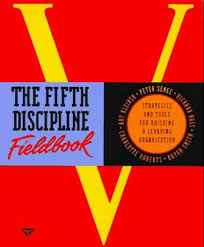Dialogue is not merely a set of techniques for improving organisations, enhancing communications, building consensus, or solving problems. It is based on the principles that conception and implementation are intimately linked, with a core common meaning. During the dialogue process, people learn how to think together - not just in the sense of analyzing a shared problem or creating new pieces of shared knowledge, but in the sense of occupying a collective sensibility, in which the thoughts, emotions and resulting actions belong not to one individual, but to all of them together.
Stages of Dialogue
PHASE 1 (instability of the container): Invitation -> Conversation -> Deliberation ->
PHASE 2 (instability in the container): Discussion (to shake apart) or Suspension (to hang in front)
PHASE 3 (Inquiry in the container):
Discussion leading to Skillful discussion (the flow of speech, logical analysis) vs Debate (to beat down)
Suspension leading to Dialogue (the flow of meaning),
PHASE 4 (Creativity in the container)
Dialogue leading to Metalogue (meaning moving with/among)
Components of a Dialogue Session (taken from a blog of the Alliance of Christian Development Agencies - see link below)
William Isaacs in the book The Fifth Discipline Field Book enumerates the basic components of a dialogue session and these are:
Invitation: The process begins with an invitation. When being invited, people are given a choice whether to accept it or reject it. Extending the invitation to dialogue opens up the space to for people to express feelings of discomfort, resistance or fear. Unlike in a monologue, dialogue cannot be forced into anyone. There has to be an agreement to partake or participate in the process. The challenge for every facilitator is to create a space where potential participants will feel safe from traditional structures of authority and hierarchy or any element that will inhibit their engagement in a dialogue.
Generative listening: This is the “art of developing deeper silences in yourself, so you can slow your mind’s hearing to your ears’ natural speed, and hear beneath the words to their meaning.” This is also perhaps, what the Psalmist refers to as “applying my heart to what I have observed.”
Observing the observer: This has to do with the developing of an environment that is “quiet” enough for people to observe their own thoughts and the team’s thoughts. Once this is achieved, dialogue now becomes possible.
Suspending assumptions: Every individual possesses a lens or a framework by which he or she interprets the world around him. In any conversation or dialogue, it is inevitable for us to bring with us these assumptions. In suspending ones’ assumptions, he or she does not lay these aside but rather, these assumptions are brought forth into the collective for them to understand, consider and weigh. One must be aware of his or her assumptions and must be willing to invite others to see a new facet in this very thing that he or she is thinking or saying.










